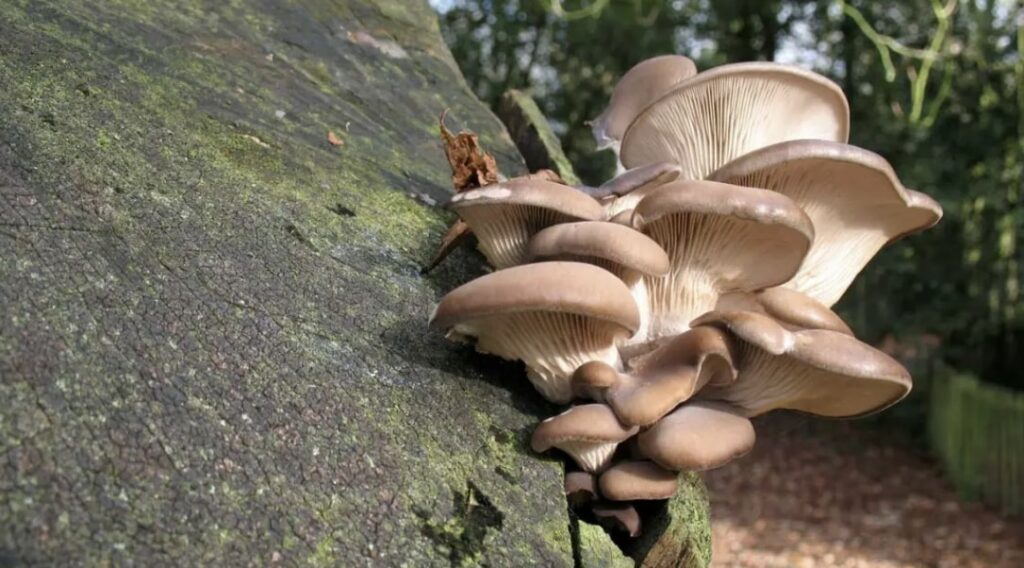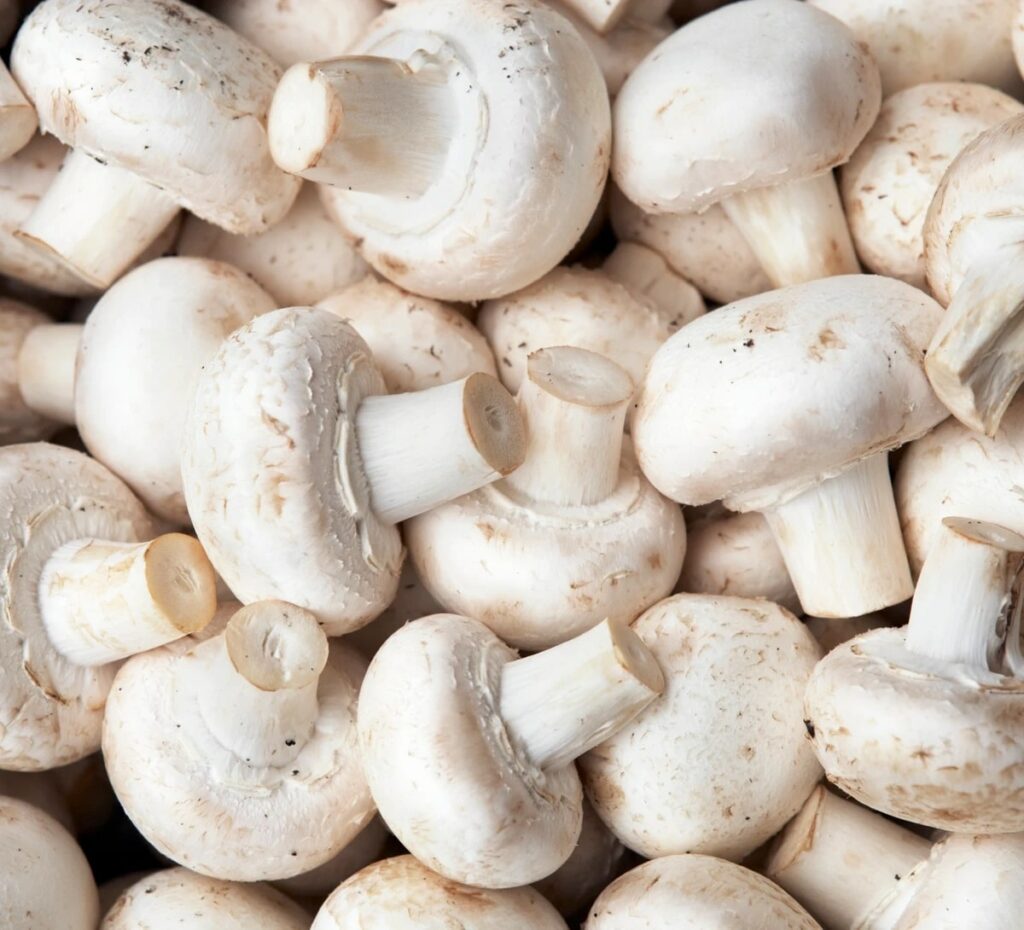
From soups to burgers, mushrooms have become a staple ingredient in different cuisines. And white mushrooms are one of the most popular edible variations of this fungi.
What are the common white flat top mushrooms?
Not all white mushrooms are edible. One wrong choice and you can be poisoned.
Here’s a comprehensive list of 15 common white flat top mushrooms – both edible and poisonous – in the wild.
1. Button Mushroom (Agaricus bisporus)
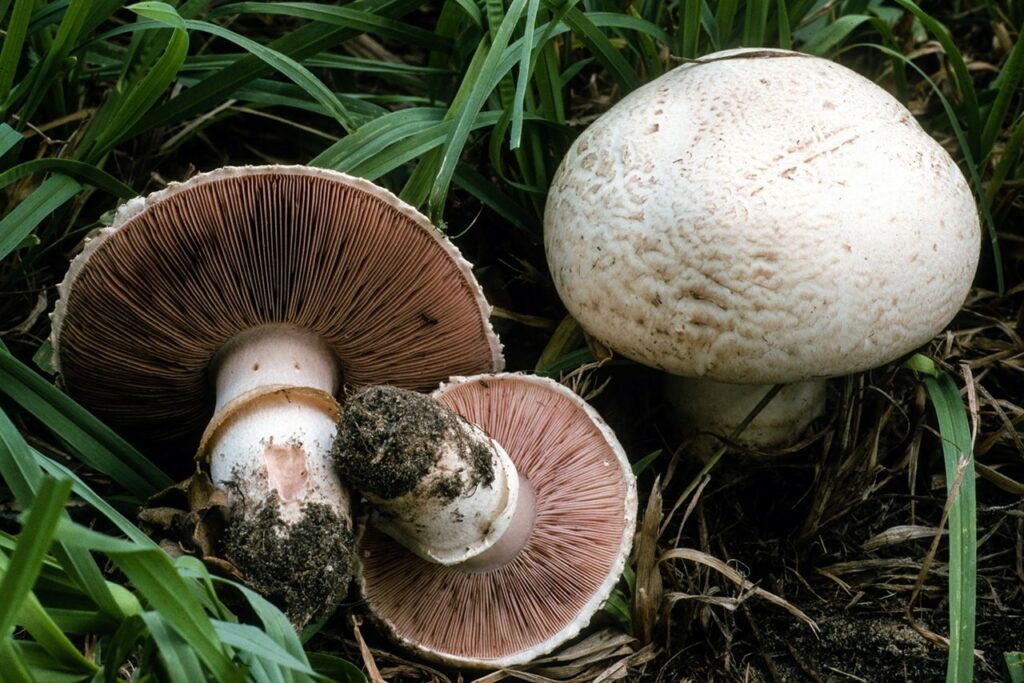
| Scientific Name | Agaricus bisporus |
| Common Name | White mushroom, table mushroom, cultivated mushroom, champignon, Button mushroom, common mushroom |
| Family | Agaricaceae |
| Toxicity | Non-Toxic |
The button mushroom is one of the most widely-cultivated and edible white mushrooms in the world.
You may have seen the Agaricus bisporus in grocery stores but it is really indigenous to North America and Europe.
Also called the table mushroom, it has a white concave cap with red-brown gills and a short thick leg.
2. Oyster Mushroom (Pleurotus ostreatus)
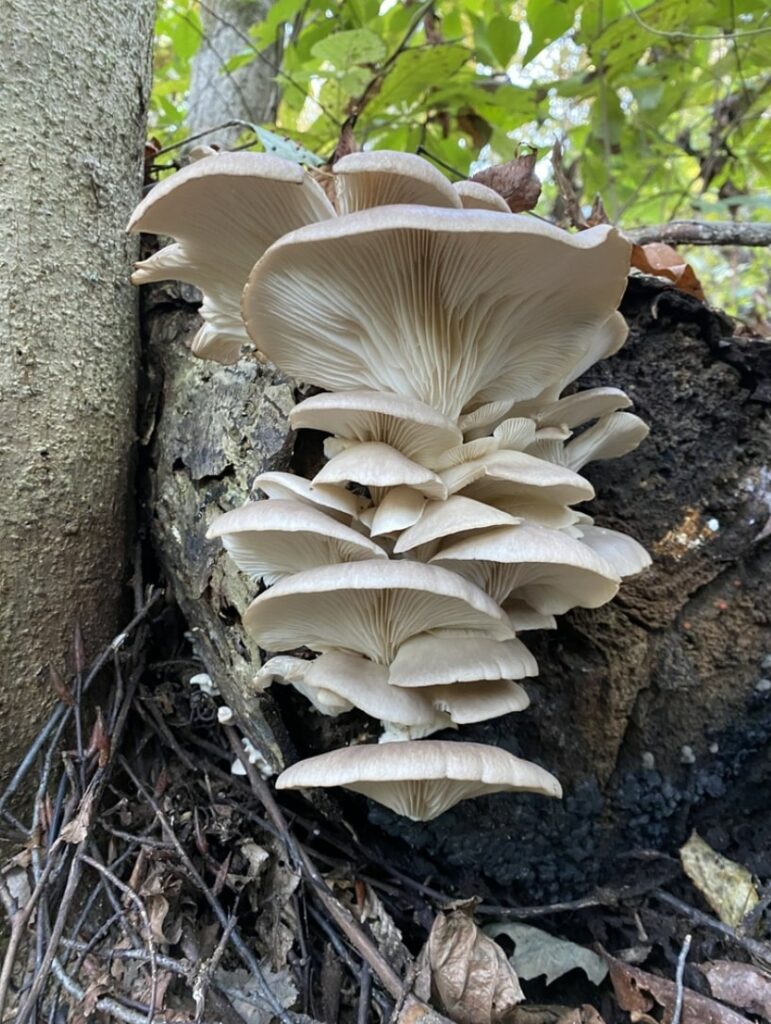
| Scientific Name | Pleurotus ostreatus |
| Common Name | Oyster mushroom, hiratake, oyster fungus |
| Family | Pleurotaceae |
| Toxicity | Non-Toxic |
The oyster mushroom is another edible species of white mushroom. It is commonly found in temperate and subtropical forests.
It joins the button mushroom in the ranks of the most widely cultivated mushrooms in the world.
The oyster mushroom’s cap is shaped like a fan with a wavy texture. It also has white gills on the underside that extends to its stipe.
3. Common Puffball (Lycoperdon perlatum)
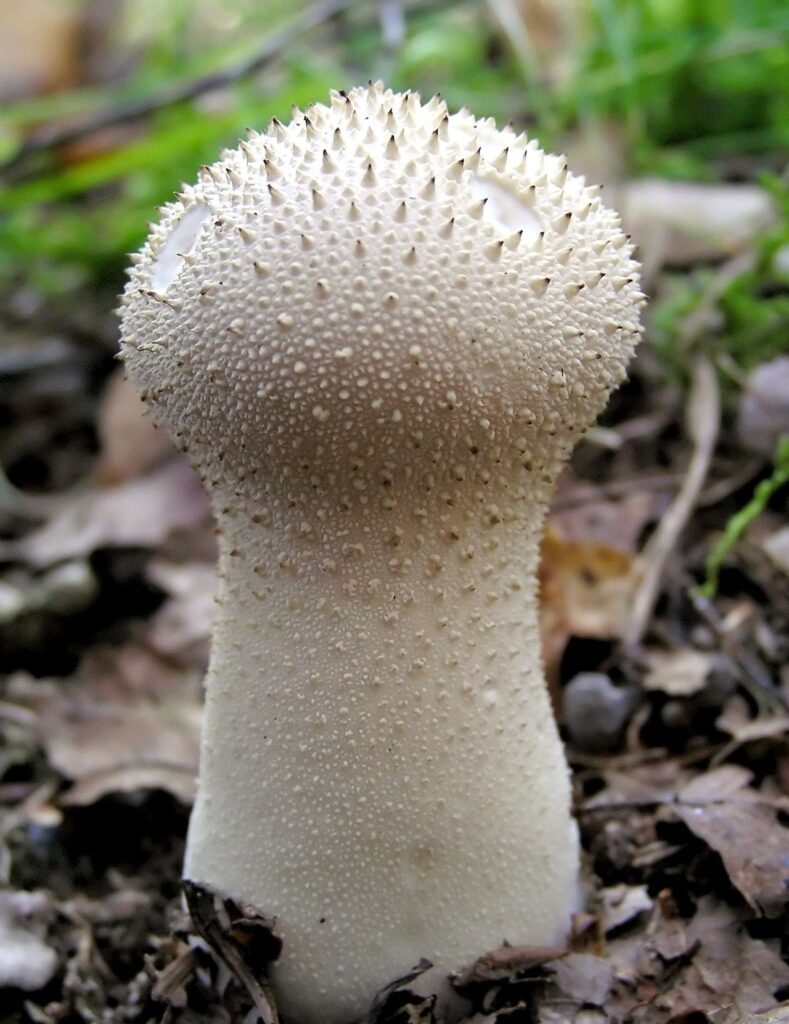
| Scientific Name | Lycoperdon perlatum |
| Common Name | Gem-studded puffball, wolf farts, devil’s snuff-box, warted puffball |
| Family | Agaricaceae |
| Toxicity | Non-Toxic |
The common puffball mushroom is an edible fungus prevalent in grass fields, woodlands, and even roadsides. They can grow scattered, in groups, or in clusters.
It has a spherical flattened top with a thick flashy stem.
Its fruiting body develops distinct spiny bumps that later on turn into a hole to discharge its spores once it matures.
It is best consumed when it is young and still all-white.
4. Lion’s Mane (Hericium erinaceus)
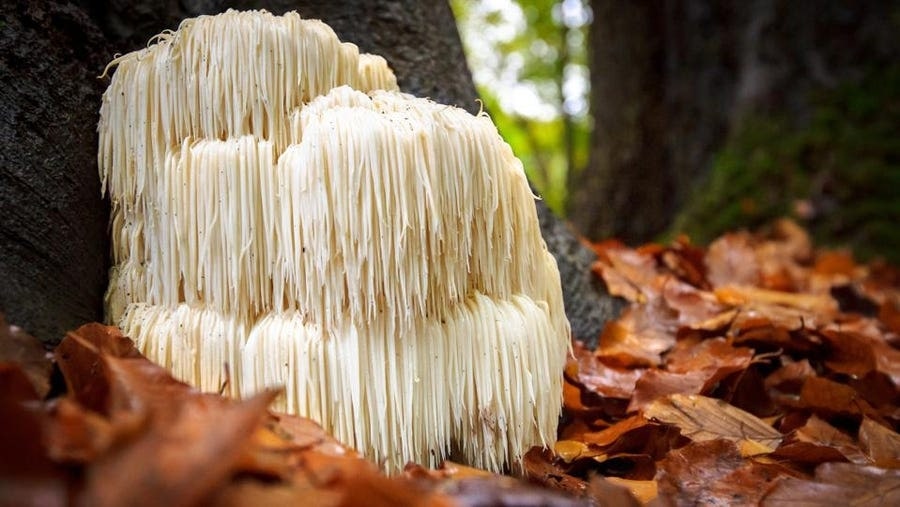
| Scientific Name | Hericium erinaceus |
| Common Name | Mountain-priest mushroom, bearded tooth fungus, Lion’s mane mushroom |
| Family | Hericiaceae |
| Toxicity | Non-Toxic |
The Lion’s Mane is an edible white mushroom native to Europe, Asia, and North America. It is a parasitic mushroom that grows on both live and dead trees.
It is known for its white or cream-hanging spore-producing spines that resemble its namesake, the lion’s mane.
5. White Dapperling (Leucoagaricus leucothites)

| Scientific Name | Leucoagaricus leucothites |
| Common Name | White agaricus mushroom, white dapperling |
| Family | Agaricaceae |
| Toxicity | Unconfirmed |
The white dapperling is common in lawns, woodlands, and grasslands.
It has smooth white caps with tiny scales. Its cap flattens as it matures.
Under the cap, the white dapperling has crowded gills that are detached from the stipe. It has a flashy hollow leg that becomes wider towards the base.
There is still no consensus as to the toxicity of the White Dapperling mushroom. Although some consider it edible, others reported suffering gastrointestinal problems when they ingested it.
6. Destroying Angel (Amanita bisporigera)
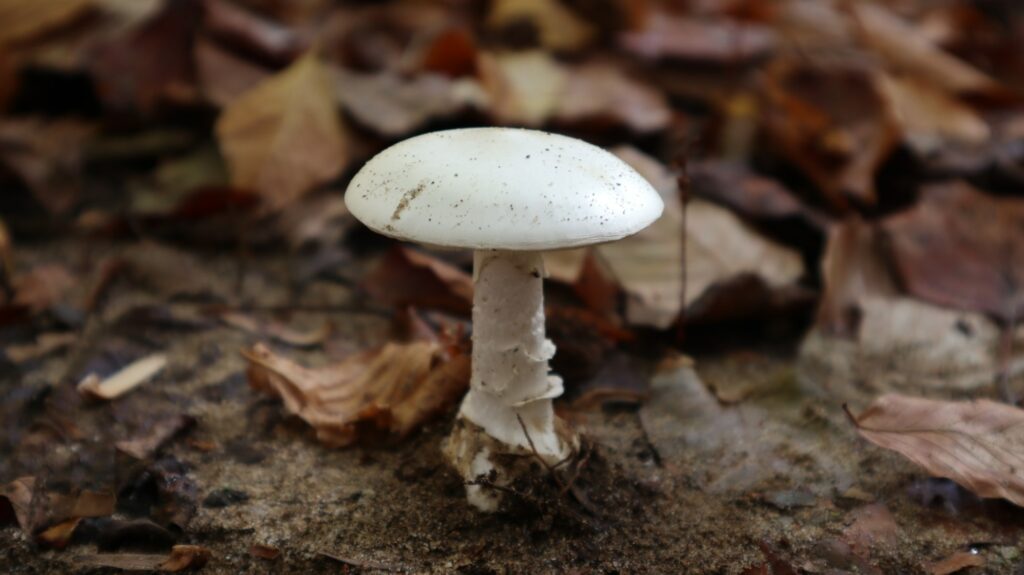
| Scientific Name | Amanita bisporigera |
| Common Name | Eastern North American destroying angel, destroying angel, eastern destroying angel amanita |
| Family | Amanitaceae |
| Toxicity | Toxic |
The destroying angel is one of the world’s most toxic mushrooms, causing liver failure to those who consume it.
It is found in the coniferous and deciduous forests of eastern North America.
This highly toxic mushroom usually emerges in groups, alone or scattered during summer and early fall.
It has a flat white cap with a bump at the center. It is supported by a long stem that widens toward the base.
Its underside consists of crowded white gills – a telltale of toxicity as we discussed above.
7. Shaggy Mane (Coprinus comatus)
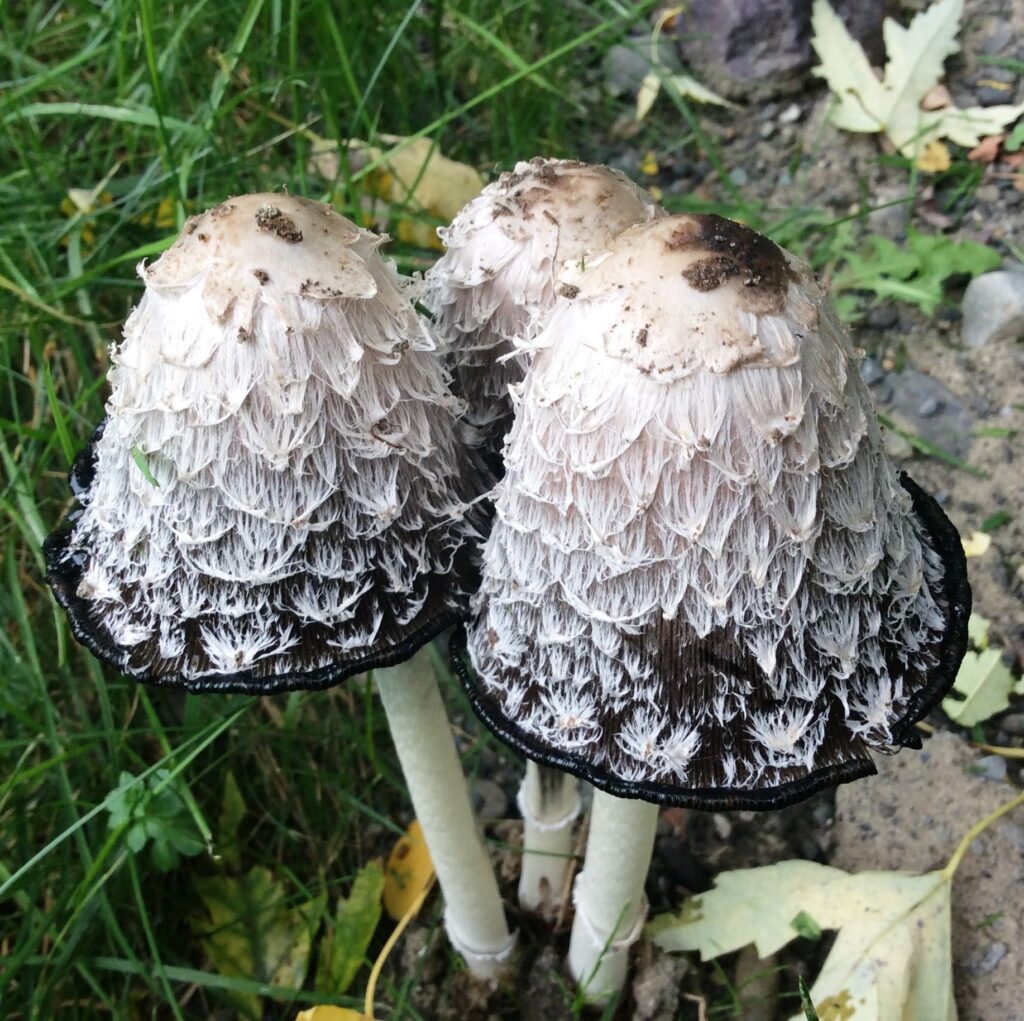
| Scientific Name | Coprinus comatus |
| Common Name | Shaggy ink cap, lawyer’s wig, shaggy mane |
| Family | Agaricaceae |
| Toxicity | Non-Toxic |
The shaggy mane is another edible mushroom native to Europe and North America. It grows in groups or clusters in lawns, disturbed areas, fields, and grasslands.
It has a white bell-shaped cap covered with shaggy scales. It has crowded gills on the underside that turns black, together with the cap, as it matures.
The shaggy mane is supported by a hollow stipe with a wide base.
8. False Parasol (Chlorophyllum molybdites)

| Scientific Name | Chlorophyllum molybdites |
| Common Name | Vomiter, green gill, green-spored parasol, green-spored Lepiota, false parasol |
| Family | Agaricaceae |
| Toxicity | Toxic |
The false parasol is one the most misidentified poisonous mushroom in the world. It grows usually in forests, grasslands, meadows, and parks.
These mushrooms emerge in fairy rings or small circular rings in the ground.
Its cap has a smooth white surface that develops brownish scales as it matures.
Its gills are crowded and short and are supported by a smooth brownish-white stem.
9. Milk-White Brittlegill (Russula delica)

| Scientific Name | Russula delica |
| Common Name | Milk-White Brittlegill |
| Family | Russulaceae |
| Toxicity | Non-Toxic |
The Milk-White Brittlegill is a white mushroom native to Europe and Asia. It is usually half-buried in coniferous or broadleaf woodlands.
It has a convex funnel-like cap, supported by a short, stout leg.
The Milk-White Brittlegill is edible but most cannot consume it due to its unpleasant taste.
10. Frosty Bonnet (Mycena adscendens)
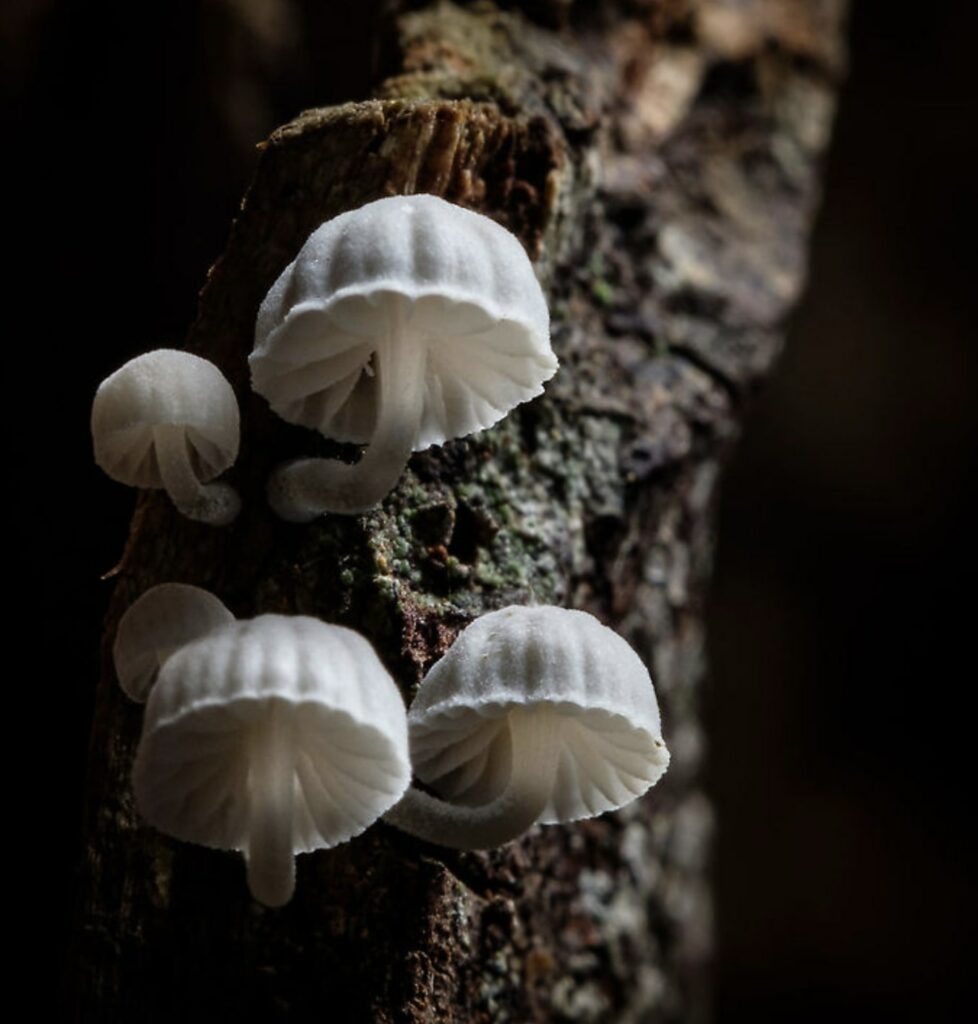
| Scientific Name | Mycena adscendens |
| Common Name | Frosty bonnet |
| Family | Mycenaceae |
| Toxicity | Unknown |
The frosty bonnet is a small white mushroom native to Europe and some parts of the United States.
The Mycena adscendens have thin long stems with small translucent white caps and gills.
They are unconsumable for growing only 7.5 millimeters in diameter.
11. Giant Puffball Mushrooms (Calvatia gigantea)
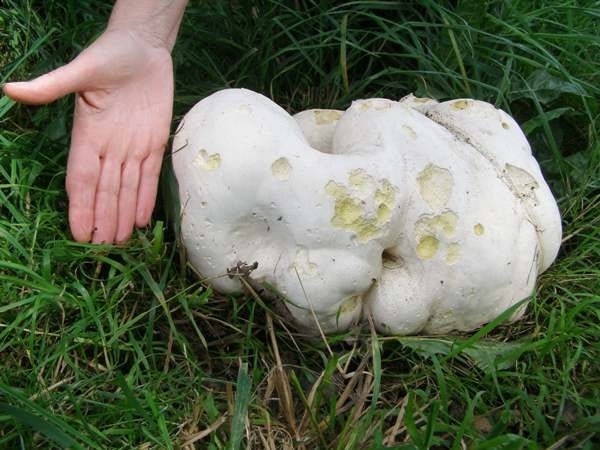
| Scientific Name | Calvatia gigantea |
| Common Name | Giant puffball mushroom |
| Family | Agaricaceae |
| Toxicity | Non-Toxic |
Giant puffball mushrooms grow to the size of a football and weighs up to 20 kg.
They are best picked and eaten when small and all-white.
To make sure it is the right edible mushroom, cut the puffball open. One should see a solid spongy white interior.
After it grows to full size, it bursts and spreads its spores in the air.
12. Enoki Mushrooms (Flammulina velutipes)

| Scientific Name | Flammulina velutipes |
| Common Name | Enoki mushrooms, velvet shank, enokitake, golden needle mushroom |
| Family | Physalacriaceae |
| Toxicity | Non-Toxic |
Enokitake are edible white mushrooms common to Asian food, especially in Japanese cuisine.
They grow on dead elm, ash, beech, oak, and other broadleaf trees. It emerges in clusters with long stems, topped by a small button-like cap.
When this mushroom is cultivated in a dark, cold place, it tends to develop into a pure white enoki.
13. Hedgehog Mushrooms (Hydnum repandum)
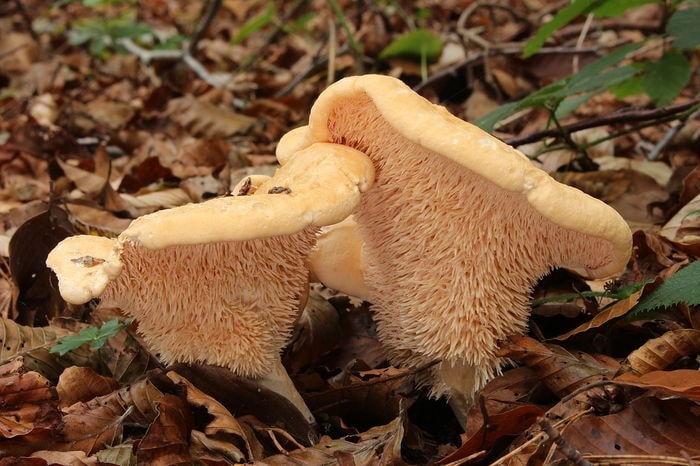
| Scientific Name | Hydnum repandum |
| Common Name | Sweet tooth, wood hedgehog, hedgehog mushroom, Wood Urchin, Pied du Mouton |
| Family | Hydnaceae |
| Toxicity | Non-Toxic |
Hedgehog mushrooms are edible white mushrooms that pop out in rings in moist streams, riverbeds, and woodlands.
It is a drought-resistant mushroom and withstands dry autumn seasons.
The hedgehog mushroom is identifiable by its spiky gills under its cap. Its white cap is unevenly-shaped and usually depressed in the middle.
It is a gourmet mushroom because of its sweet taste and crunchy texture.
14. Meadow Mushroom (Agaricus campestris)
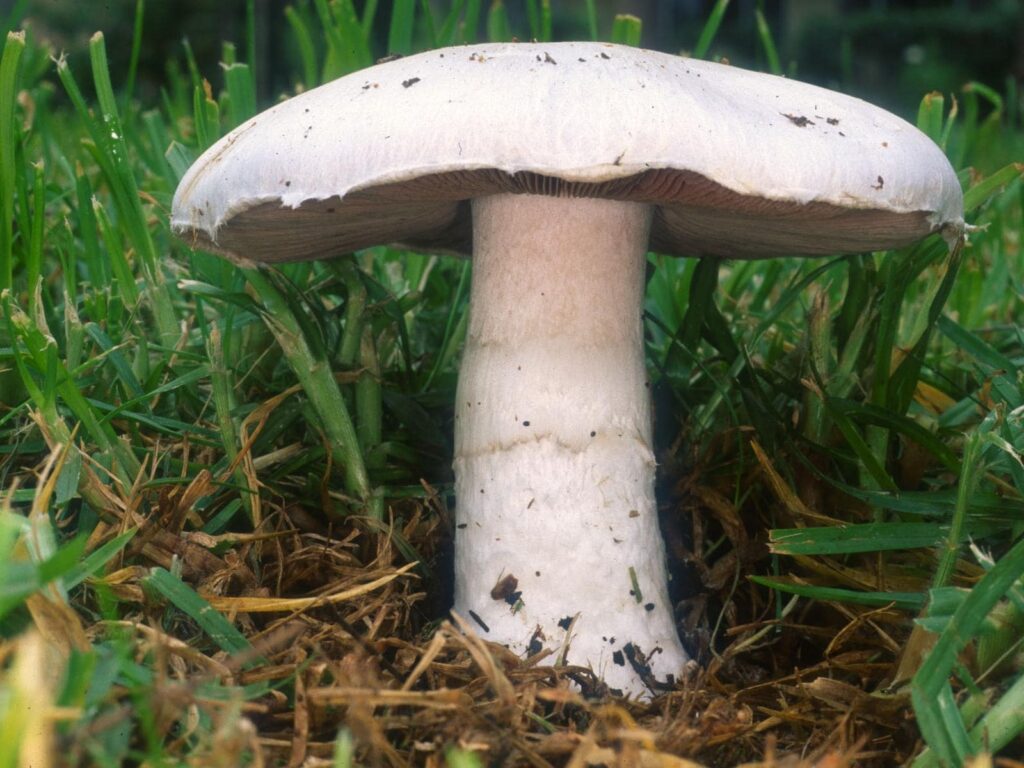
| Scientific Name | Agaricus campestris |
| Common Name | Field mushroom, meadow mushroom |
| Family | Agaricaceae |
| Toxicity | Non-Toxic |
The meadow mushroom is another widely-cultivated white mushroom in the world. It grows in fairy rings on grasslands, lawns, and meadows.
It has a smooth nearly-flat white cap with pinkish-brown gills on the underside.
It gives off a mild taste and pleasant odor.
But be careful as it looks like the highly toxic destroying angel. Take note of the pink gills of the meadow mushroom, as opposed to the white gills of the destroying angel.
15. Stinkhorns (Phallus impudicus)
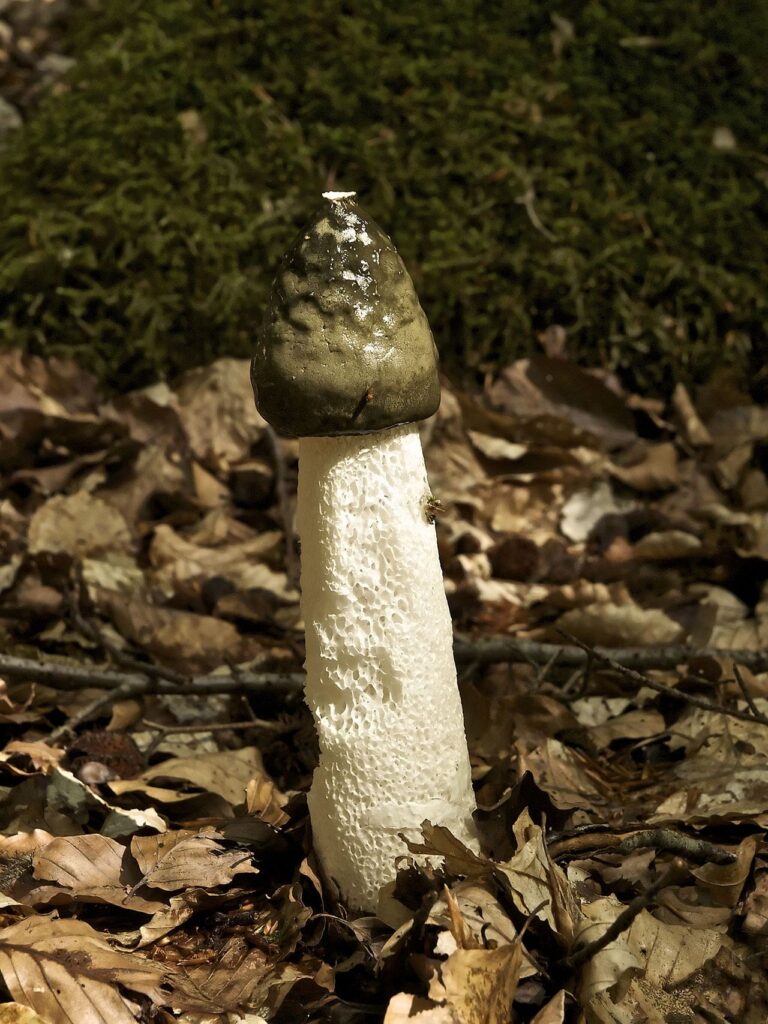
| Scientific Name | Phallus impudicus |
| Common Name | Common stinkhorn, witch’s egg |
| Family | Phallaceae |
| Toxicity | Toxic |
The common stinkhorn is a poisonous mushroom commonly found in coniferous and broadleaf woodlands.
It grows out of the underground sack or egg. Its cap is covered by an olive green smelly substance called gleba that attracts insects.
The common stinkhorn resembles a phallus and can reach up to 25 centimeters tall.
It has a cone-shaped cap with a small white ring when the gleba is removed.
Apart from being toxic, foragers have likened its smell to rotting flesh.
Do you know of any other white mushrooms that should be on this list? Let us know in the comments below!




